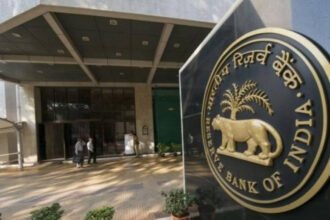

Closeup rolled of variety banknote and multi currency around the world. Exchange rate and Forex investment concept.-Image.
Access the version in PDF here.

 Scaling up financing for development is essential to meet the 2030 Agenda for Sustainable Development. In a September 2023 report, the United Nations Conference on Trade and Development (UNCTAD) estimated that the annual investment gap to achieve the Sustainable Development Goals (SDGs) amounts to $4 trillion. Mobilising these resources is crucial but extremely challenging. The Group of 20 (G20), under the current Brazilian Presidency, sees multilateral development banks (MDBs) as key actors in this process and has created a roadmap for reforms to achieve scale and effectiveness.
Scaling up financing for development is essential to meet the 2030 Agenda for Sustainable Development. In a September 2023 report, the United Nations Conference on Trade and Development (UNCTAD) estimated that the annual investment gap to achieve the Sustainable Development Goals (SDGs) amounts to $4 trillion. Mobilising these resources is crucial but extremely challenging. The Group of 20 (G20), under the current Brazilian Presidency, sees multilateral development banks (MDBs) as key actors in this process and has created a roadmap for reforms to achieve scale and effectiveness.
The World Bank has recognised the need to develop solutions for foreign exchange risk mitigation as part of its Evolution Roadmap. However, concrete policy solutions to expand sustainable financing through local currency lending remain limited thus far.
However, filling this gap with foreign currency debt poses significant risks for already vulnerable countries. As UNCTAD reported in July 2023, the number of countries facing high debt levels has surged, rising from 22 in 2011 to 59 in 2022. Developing countries’ capacity to service external debt has worsened, with external public debt to exports increasing from 71 per cent in 2010 to 112 per cent in 2021. As a result, interest payments in many developing countries have outpaced public spending on health, education and investment, with 3.3 billion people now living in countries that spend more on interest payments than on health or education.
Ghana’s recent experience is illustrative. Despite a decade of economic growth, the country defaulted on its external public debt in December 2022, largely due to its reliance on foreign currency borrowing. As of 2021, 48 per cent of Ghana’s public debt was denominated in foreign currency, with the World Bank’s International Development Association (IDA), the Banks’ low-income lending arm, accounting for 13 per cent of this through concessional credits amounting to around $6 billion. While IDA credits are attractive due to their concessional terms, they place the foreign exchange risk on the borrower. The sharp depreciation of the Ghanaian cedi in 2022, largely driven by external pressures, made it impossible for Ghana to meet its foreign currency debt obligations. More than a year and a half after the default, Ghana has reached agreements with official bilateral creditors but has yet to secure a debt restructuring deal with private creditors. This delay is largely due to inefficiencies in the current legal framework for sovereign debt restructuring, which lacks binding mechanisms to ensure private creditor participation (see Observer Spring 2023).
The link between exchange rate volatility and foreign currency debt is not new. In a 1999 paper, economists Barry Eichengreen and Ricardo Hausmann coined the term ‘original sin’ to describe the inability of developing countries to borrow in their own currency. This issue remains prevalent today, with about half of public debt in low- and middle-income countries (LMICs) denominated in foreign currencies, reinforcing the hierarchical nature of the international financial system (see Observer Autumn 2022). The IMF, World Bank and other MDBs contribute to this by predominantly lending in hard currency.
The climate crisis has further intensified the need to address the reliance on foreign currency financing. Climate-vulnerable countries are more likely to default on their debt, particularly when it is denominated in foreign currency. Investments in sustainability, such as renewable energy, generate revenue in local currencies, which makes foreign currency debt especially risky. A depreciation of the local currency can jeopardise both these investments and the sustainability of the debt.
The connection between foreign debt and climate vulnerability is set to be a central issue at the Fourth International Conference on Financing for Development (FfD), scheduled for mid-2025 in Seville, Spain. In its Financing for Sustainable Development Report 2024, the United Nations called for improvements to MDB lending terms, including the provision of longer-term and local currency loans, to offer greater fiscal space for LMICs.
MDBs’ aversion to currency risk
Despite the clear need for local currency lending, MDBs remain reluctant to expand their local currency operations due to their aversion to currency risk. This aversion is often formalised in their founding charters but is more frequently reflected in decisions by their governing boards, motivated by a fiduciary duty to protect the banks’ capital from the perceived high risk of currency fluctuations. This risk perception leads MDBs to allocate more capital to cover local currency risks to maintain their triple-A credit ratings. As a result, local currency lending is typically limited to situations where MDBs can mitigate the risk through currency derivatives or by issuing local currency bonds. For instance, the International Bank for Reconstruction and Development (IBRD), the World Bank’s middle-income country lending arm, issued a 9-year local currency loan to Uruguay, fully hedged by a corresponding Uruguayan peso bond with matching amounts, maturity and payment schedules. Such ‘back-to- back’ funding structures are common among MDBs for local currency loans.
However, relying on market mechanisms increases the cost and complexity of local currency financing, especially since interest rates are typically higher in LMICs. In many cases, these rates exceed the risk of future exchange depreciation. The high costs of hedging and borrowing in these currencies result in MDBs offering local currency financing at rates that may not be attractive to borrowers, particularly sovereigns. This is because MDBs either raise local currency funds at rates similar to those of sovereign governments or incur hedging costs that reflect the gap between local and international (primarily US dollar) interest rates. Consequently, local currency lending rates remain high, generally not lower than those available to sovereign borrowers, limiting the borrower pool to the private sector and non-sovereign public entities. Thus, while there is a clear need for sustainable local currency finance, official creditors are unable to offer it on sufficiently attractive terms.
This approach assumes that existing financial markets provide the most efficient solution for managing exchange rate risk, which contradicts the developmental mandate of MDBs. The focus on transaction-specific risk management overlooks the broader macroeconomic perspective typically used in assessing MDB portfolio performance. Notably, the World Bank has recognised the need to develop solutions for foreign exchange risk mitigation as part of its Evolution Roadmap implementation process, including measures to increase local currency financing in order to facilitate private investment, especially for the green transition. However, concrete policy solutions to expand sustainable financing through local currency lending remain limited thus far.
Enhancing local currency financing
Several strategies could be adopted to enhance local currency financing at MDBs. First, reforming MDBs’ risk management frameworks is crucial. The perception of elevated exchange rate risk in LMICs often acts as a barrier to such lending. While these risks are real, they may be exaggerated in certain contexts. The success of TCX, a non-profit entity established by a consortium of development finance institutions that provides hedges for developing countries, has demonstrated that currency risks can be effectively managed, with a positive annualised return of 1.6 per cent over 15 years. Similarly, the African, Caribbean and Pacific Investment Facility, led by the European Union (EU) and the European Investment Bank (EIB), has shown that local currency loans can be provided without relying on external hedging. The Facility charges a premium to account for foreign exchange risk when lending in local currencies, but it does not hedge its exposure with external parties. This approach further illustrates that currency risk, while real, can be managed internally.
These examples suggest that MDBs and other lenders need to reassess their extreme aversion to foreign exchange risk. Just as MDBs manage credit risk, they are capable of managing a certain level of foreign exchange risk, especially given the significant benefits this could bring to recipient economies. To achieve this, MDBs could adopt a portfolio approach to risk management, setting aggregate limits for different risk categories, such as market risk, thereby allowing them to manage currency risk across multiple operations, much as they already do with credit risk. Under this approach, MDBs could assume some currency risk, provided it does not create excessive volatility for the overall portfolio, thereby expanding the scope for local currency loans. MDBs could also consider pricing currency risk in-house. By fully hedging currency risk, MDBs effectively accept the risk models of hedge providers, which often include a premium for LMIC currencies. Institutions such as TCX specialise in providing currency hedges, usually priced as a spread over the differential between US dollar and local currency interest rates. While LMICs often have volatile currencies, MDBs could independently assess currency risk, allowing them to make more informed judgements about market quotes.
As part of the broader reforms promoted by the G20’s Brazilian Presidency, the Brazilian government should actively encourage the G20 working group to push for cooperation among MDBs on currency risk-sharing. By adopting a system-wide approach, MDBs could develop more efficient mechanisms to distribute exchange rate risk across their portfolios. This coordinated strategy would allow MDBs to manage exchange rate risk comprehensively. The momentum generated by the Brazil’s G20 Presidency should continue under the G20 South African Presidency in 2025, ensuring that this focus on collaborative risk management becomes a priority. One potential strategy is to create an off-balance sheet fund pooling local currency assets to diversify both credit and currency risk. Such a fund could significantly reduce idiosyncratic currency risks and serve as a de facto partial hedge against currency risk. Depending on the overall risk appetite of the MDBs, the fund could hedge the remaining undiversifiable currency risk through swaps or local-currency liabilities. Additionally, a donor-provided guarantee against extreme depreciation events, serving as loss-absorbing capital, could offer an extra layer of risk mitigation.
Second, where hedging is needed, MDBs could diversify local currency hedging sources. MDBs typically source foreign currency hedges from international banks, which can inflate costs due to differences in balance sheet structures and risk assessments. Local onshore banks might offer more cost-effective hedges, but MDBs are often restricted from using them due to counterparty risk restrictions. Reducing these restrictions could lower hedging costs and, in turn, the interest rates on local currency loans by enabling the use of local financial institutions for currency hedging.
Scaling up and subsidising TCX is another important avenue. In many less-developed financial markets, hedges are often unavailable. Although TCX has demonstrated medium-term profitability, there is a need to increase hedge sizes and reduce costs to enhance MDBs’ local currency lending capabilities. Expanding TCX’s facilities with increased capital from shareholders, along with concessional financing from donors, could provide portfolio risk guarantees and interest rate subsidies, thereby lowering the cost of hedges offered by TCX.
Another option, particularly for private sector lending, is to allow shareholder countries to pay their equity capital in their own currencies. This would enable MDBs to increase their lending capacity without incurring currency hedging costs, up to the limit of the paid-in capital. This approach would be especially valuable in frontier currency markets in low-income countries, where hedging solutions are scarce or non-existent.
Finally, facilitating local currency sourcing in domestic markets is also crucial. One strategy would be for local central banks to purchase MDB local currency bonds in underdeveloped financial markets with limited local financial institutions or a domestic bond market. These purchases would provide local currency funding to MDBs while allowing central banks to diversify their yield-seeking portfolios into high-credit-rating assets. Another strategy would involve promoting harmonised transnational securities regulations applicable to MDBs across jurisdictions, reducing transaction costs and simplifying the issuance of bonds onshore.
Addressing the foreign currency debt trap is essential for sustainable development financing. MDBs must expand their local currency operations, particularly in the context of the overlapping debt and climate crises. To achieve this, MDBs must shift away from their current reliance on hard currency lending and adopt a more flexible approach to currency risk management. Local currency financing should be seen as a core part of the developmental mandate of MDBs, not merely as an option for a limited set of circumstances.
Bruno Bonizzi is associate professor of research at the University of Hertfordshire Business School. He holds a PhD in Economics from SOAS, University of London. His research focuses on macro-finance, with particular reference to emerging economies and institutional investors. Karina Patrício Ferreira Lima is assistant professor at the University of Leeds School of Law. She holds a PhD in Law from the University of Durham. Her research centres on global economic governance, with a focus on the legal aspects of money, finance and sovereign debt. Annina Kaltenbrunner is professor of global economics at the University of Leeds Business School. She holds a PhD in Development Economics from SOAS, University of London. Her research focuses on financial and monetary dynamics in developing and emerging economies, with an emphasis on how international monetary and financial hierarchies affect external vulnerability, macroeconomic policy, financial development, and structural change in these economies.





















